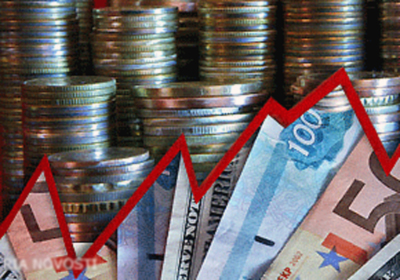Russian Economy Shrank Less Than Forecast as Growth Seen Closer

(Bloomberg – bloomberg.com – Olga Tanas – May 16, 2016)
Russia’s economy contracted less than forecast in the first quarter, leaving it closer to growth than at any time since it slid into recession last year.
Gross domestic product fell 1.2 percent from a year earlier after a decline of 3.8 percent in the previous three months, the Federal Statistics Service said on Monday. That was less than all but one forecast of 22 analysts in a Bloomberg survey, whose median was for a contraction of 2 percent. The Economy Ministry in Moscow had projected a 1.4 percent decrease.
The world’s biggest energy exporter responded to the shock of the oil collapse and international sanctions by allowing the ruble to trade freely in late 2014. While the worst currency crisis since the sovereign default in 1998 sent real wages plunging the most since President Vladimir Putin came to power, it also helped raise the competitiveness of some industries. The Russian leader last month called changes to the economy’s makeup the most important task as the nation endures its longest recession in two decades.
“Some adaptation to the new environment has taken place as the economy passed from deep recession to stagnation,” said Olga Sterina, an analyst at UralSib Capital in Moscow. “Yet the dependence on the situation in the commodities market remains high.”
Ruble Rally
The optimism has also been reflected in Russian assets. The ruble, which plunged to a record low in January, has stabilized as crude rebounded. It’s gained more than 13 percent against the dollar, the best performance globally this year, after a 20 percent loss in 2015.
The central bank has credited the ruble’s free float for helping offset the external shocks. Changes in the economy are bringing closer “a phase of recovering growth,” policy makers said in a statement April 29, when they kept borrowing costs unchanged for a sixth consecutive meeting. Bank of Russia Governor Elvira Nabiullina last month highlighted agriculture alongside the food and chemical industries as positive examples.
‘Positive Signals’
“The most important thing right now is probably how the economy is adjusting to new conditions,” Nabiullina said last month. “And we see some positive signals, some of the expected shifts have began in the structure of the Russian economy. There’s a shift from non-tradable sectors to tradables, especially those oriented toward exports.”
The annual decline in industrial output averaged 0.7 percent in the first three months, slowing from 3.4 percent in 2015. The average contraction in retail sales eased to 5.4 percent in January-March from 9.7 percent last year.
Energy remains the lifeblood of the economy. Russia, one of the world’s biggest oil exporters, is looking to cut its dependence on commodities prices after their collapse plunged the country into recession.
The Economy Ministry predicts that the contraction will slow to 0.2 percent from 3.7 percent in 2015. While the central bank is more pessimistic, forecasting a drop of as much as 1.5 percent, it says quarterly GDP growth may return in the second half of this year or in early 2017.
Don’t Print
As the oil market remains volatile and elections loom this year and in 2018, there’s been a growing appetite to print money to boost the recovery. The central bank is resisting calls from businessmen and officials to resume monetary easing after halting it for 10 months, as inflation is almost two times higher than its 4 percent target. The Finance Ministry is struggling to keep the budget deficit within 3 percent of GDP after it reached the highest in five years in 2015.
When Putin addressed the economy last month during his annual televised call-in show, he rejected such calls and touted an increase in high-tech exports, especially when compared with energy.
What’s “most important is not to print money but to change our economy’s structure,” Putin said. “The main issues are how to attract investment, make our economy more efficient, and ensure demand — in other words, how to raise people’s incomes.”
Article ©2016 Bloomberg L.P. All Rights Reserved. Article also appeared bloomberg.com/news/articles/2016-05-15/nabiullina-spots-green-shoots-as-russian-gdp-edges-toward-growth
